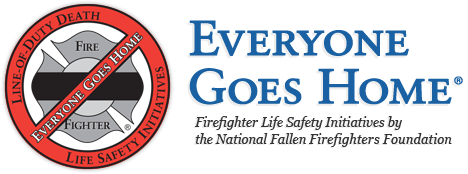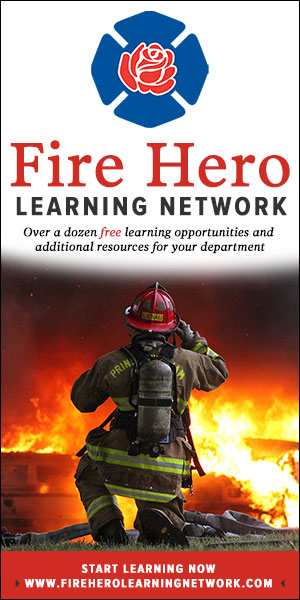A growing group of U.S. firefighters are connected beyond the usual camaraderie of the fire service and the passion for their work. These are firefighters with cancer.
Whether it’s as a survivor or as someone who has watched a friend and co-worker battle the disease, the number of firefighters affected by cancer is on the rise. Commissioner Joseph Finn, of the Boston Fire Department, noted they’ve been paying close attention to this increase. They estimate every three weeks a Boston firefighter –either active duty or retired – is diagnosed with a form of the disease.
“We need to make others understand it’s an occupational risk nationally. When you put people in a hostile, toxic environment like a house fire, you need to recognize the risks,” said Commissioner Finn.
Recently, the Fire Service Occupational Cancer Alliance, which includes representatives from all the major fire service organizations, product manufacturers and medical researchers, gathered for a two-day strategy session. The goal isn’t only to raise awareness about the risk of cancer to firefighters, but to make cancer a priority issue.
As Finn explained, 2014 was an especially difficult year for his department. A fire in the city’s Back Bay area made national headlines that March when two firefighters were killed and 13 others injured. Additionally, four other department members died from cancer.
“We want to change attitudes and behaviors (towards cancer),” Finn said. “We can reduce exposures and deaths if people look out for themselves.” He also believes the department veterans are on board with this philosophy. “They’re tired of burying so many of their friends.”
The Alliance discussed the immediate need to raise awareness about the risk to firefighters, both within the fire service and the public, as well as steps for prevention. One of the biggest challenges in making the connection between firefighters and cancer rates is the latency period of many diagnoses. Often, cancers aren’t diagnosed until individuals are close to retirement or already retired. Usually the date of a single toxic exposure from an incident can’t be determined.
Jim Seavey, Sr., Fire Chief with Cabin John (MD) Volunteer Fire Company and a Captain with District of Columbia Fire Department, remarked how fires have changed drastically since he joined in 1976. “We’ve gone from fighting paper and wood fires to fighting tanker fires inside people’s homes,” he said. “When I started it wasn’t standard procedure to wear your mask going in. It was like standing next to a camp fire. Now, when I go into a fire, the acrid smoke is immediately noticeable…You have to protect yourself to the fullest extent.”
Seavey, who is an occupational cancer survivor, believes all fire service leaders should actively encourage younger firefighters to take preventative steps. He told the Alliance that he feels confident they can make an impact within the fire service and the public.
Determined to make this effort successful, the Alliance members broke into four groups to brainstorm next steps in critical areas. All the groups recognized that developing messages about risks and prevention that resonate with younger firefighters in the academies is a top priority. Educating elected officials, manufacturers, medical professionals and the general public about the prevalence of cancer is also essential to raising awareness.
While the fire service already understands many prevention steps that should be employed – from wearing personal protective equipment (PPE) properly, cleaning it regularly, and rotating out old gear to hooking up exhaust hoses and eating a healthy diet – there are many unknowns about the toxicity exposure firefighters endure. The attendees strongly agreed that filling in the research gaps is critical not only to prevention and treatment, but also for securing grant monies for better equipment or wellness programs.
“We’re never going to eradicate cancer,” said Bryan Frieders, President of the Firefighter Cancer Support Network. “But what we’re doing here through prevention, research and advocacy can minimize risk and reduce the number of cancer diagnoses. I’m excited to see where we can go.”
The groups agreed that research is especially critical when trying to educate legislators, medical professionals and organizations, and insurers about medical and death benefits. Many of these individuals and groups are unaware of the current – and potential – impact cancer has on the fire service. Others are concerned about the perceived expense and possible claims against the department, government or company. But armed with more research, Chief Dennis Compton, Chairman of the Board of Directors of the National Fallen Firefighters Foundation (NFFF), and other attendees are confident the tide can change.
“When the Zadroga Act didn’t get funded this year, it was very frustrating for all first responders,” he said. “To think that people would cut those benefits is very upsetting. We’ll do everything we can to keep it funded.”
Chief Ron Siarnicki, Executive Director of the NFFF, agreed. “To see firefighters who served their communities, developed cancer at some point, and are not being cared for is disheartening.”
But Siarnicki is encouraged by the partnerships that are already forming through the Alliance. “We have all entities of the fire service here, working together for one common cause.”
Beyond those in the room, the groups identified various potential partners, including the American Cancer Society, pharmaceutical companies, insurance providers, equipment and apparatus manufacturers and even sports/entertainment industries.
Richard Paris, President of Boston Firefighters International Association of Fire Fighters (IAFF) Local 718, summed-up the goal of the meeting with a personal message. “Put on your face piece. Wear your gear. I’m going to have a grandchild at the end of this year. I want to see my grandchildren grow up. I want you to see your grandchildren grow up, too.”


